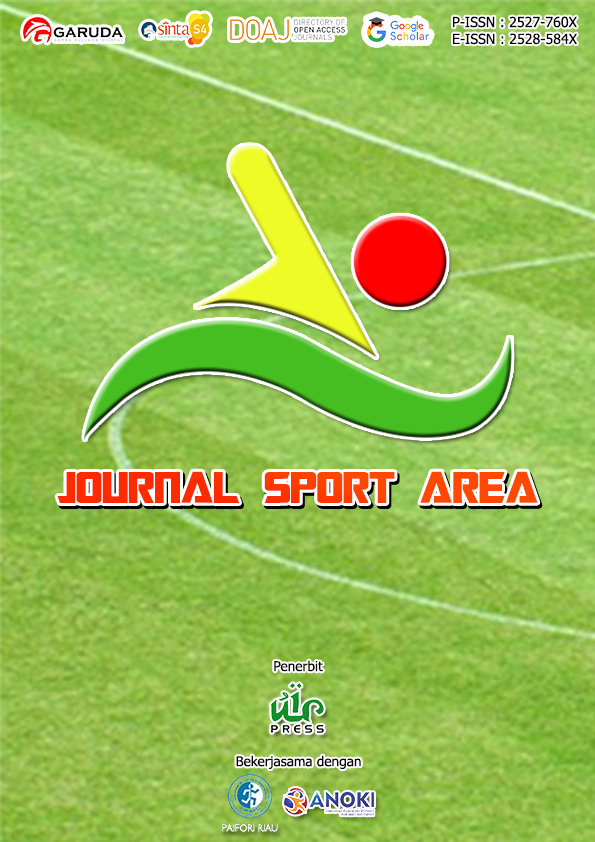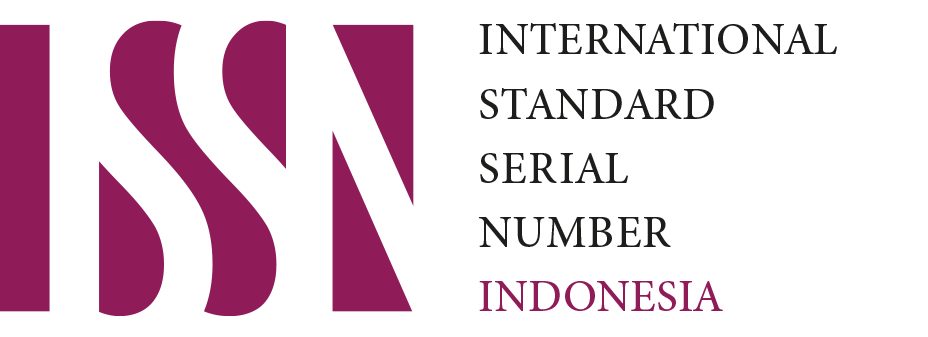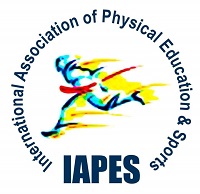Sports participation and its implication on the academic performance of students in tertiary institutions in Nigeria: A literature review
Keywords:
Sports participation, academic performance, tertiary institutionAbstract
The study focused on sports participation and its implication on the academic performance of students in tertiary institutions in Nigeria. To ascertain the objective of the study, the study focused on Overview of sports, Sports participation, Implication of sports on academic performance of students and Benefits of Sports Performance on academic Performance of Students however, concluded that, sports participation would have no negative implication on students’ academic performance in tertiary institutions. The study also concluded that students of tertiary institution in Nigeria should not be discouraged from participating in sports with the misconception that participation in sports worsens students’ general performance and specifically performance of students of tertiary institution. What this study implies is that, coaches, lecturers and school management should not seize students from participating in sporting activities as this go a long way in assisting them in all ramifications. It was suggested that future researcher should broaden the scope of the study to at least two to three countries so as to encourage participation in sports. It was further suggested that the Study should be conducted on the effects of sports participation among secondary and primary school students in Nigeria.
Downloads
References
Bailey, R., Hillman, C., Arent, S., & Petitpas, A. (2013). Physical activity: an underestimated investment in human capital? Journal of physical activity and health, 10(3), 289-308. https://doi.org/10.1123/jpah.10.3.289
Broh, B. A. (2002). Linking extracurricular programming to academic achievement: Who benefits and why?. Sociology of education, 75, 69-95. https://doi.org/10.2307/3090254
Choi, H. S., Johnson, B., & Kim, Y. K. (2014). Children’s development through sports competition: Derivative, adjustive, generative, and maladaptive approaches. Quest, 66(2), 191-202. https://doi.org/10.1080/00336297.2013.861757
Clark, M., & Parette, P. (2002). Student athletes with learning disabilities: A model for effective supports. College Student Journal, 36(1), 10-18.
Cornelißen, T., & Pfeifer, C. (2007). The impact of participation in sports on educational attainment: New evidence from Germany. IZA DP, 3160.
Darling, N., Caldwell L. L., & Smith, R. (2005). Participation in school-based extracurricular activities and adolescent adjustment. Journal of Leisure Research, 37(1), 51–76. https://doi.org/10.1080/00222216.2005.11950040
Davis, C. L., & Cooper, S. (2011). Fitness, fatness, cognition, behavior, and academic achievement among overweight children: do cross-sectional associations correspond to exercise trial outcomes?. Preventive Medicine, 52, S65-S69. https://doi.org/10.1016/j.ypmed.2011.01.020
Din, F. S. (2006). Sports activities versus academic achievement for rural high school students. National Forum of Applied Educational Research Journal-Electronic 19(3E), 1-11.
Eccles, J. S., Barber, B. L., Stone, M., & Hunt, J. (2003). Extracurricular activities and adolescent development. Journal of social issues, 59(4), 865-889. https://doi.org/10.1046/j.0022-4537.2003.00095.x
Gaston-Gayles, J. L. (2005). The factors structure and reliability of the student athletes’ motivation towards sports and academics questionnaire (SAMSAQ). Journal of College Student Development, 46(3), 317-327. https://doi.org/10.1353/csd.2005.0025
Hansen, D. M., Larson, R. W., & Dworkin, J. B. (2003). What adolescents learn in organized youth activities: A survey of self, reported developmental experiences. Journal of Research on Adolescence, 13(1), 25-55. https://doi.org/10.1111/1532-7795.1301006
Hartmann, D., & Massoglia, M. (2008). Reassessing the Relationship Between High School Sports Participation and Deviance: Evidence of Enduring, Bifurcated Effects. The Sociological Quarterly, 48, 485‐505. https://doi.org/10.1111/j.1533-8525.2007.00086.x
Hartmann, D. (2008). High school sports participation and educational attainment: Recognizing, assessing, and utilizing the relationship. Report to the LA84 Foundation. Los Angeles, CA: LA84 Foundation.
Holt, N. L., Kingsley, B. C., Tink, L. N., & Scherer, J. (2011). Benefits and challenges associated with sport participation by children and parents from low-income families. Psychology of Sport and Exercise, 12(5), 490-499. https://doi.org/10.1016/j.psychsport.2011.05.007
Jamil, J., Khan M. B., & Kareem, F. D. (2012). Effect of physical education and activity levels on academic achievement in children. Medicine and Science in Sports and Exercise, 38(8), 1515-19. https://doi.org/10.1249/01.mss.0000227537.13175
Kann, L., Kinchen, S., Shanklin, S. L., Flint, K. H., Kawkins, J., Harris, W. A., ... & Zaza, S. (2014). Youth risk behavior surveillance—United States. Morbidity and Mortality Weekly Report, 63, 1–168.
LaFountaine, J. (2007). Wellness among first year collegiate female athletes. Women in Sport & Physical Activity Journal, 16(2), 83.
Marsh, H. W., & Kleitman, S. (2003). School athletic participation: Mostly gain with little pain. Journal of Sport and Exercise Psychology, 25, 205–228. http://dx.doi.org/10.1136/bjsm.2004 .01770710.1123/jsep.25.2.205
Nelson, M. C., & Gordon-Larsen, P. (2006). Physical activity and sedentary behaviour patterns are associated with selected adolescent health risk behaviours. Paediatrics, 117(4), 1281-1290. https://doi.org/10.1542/peds.2005-1692
Parish, T. S., & Williams, D. (2007). Some tips regarding how to motivate athletes. International Journal of Reality Therapy. 26, 39-42.
Pate, R. R., Davis, M. G., Robinson, T. N., Stone, E. J., McKenzie, T. L., & Young, J. C. (2006). Promoting physical activity in children and youth: A leadership role for schools: A scientific statement from the American Heart Association Council on Nutrition, Physical Activity, and Metabolism (Physical Activity Committee) in collaboration with the Councils on Cardiovascular Disease in the Young and Cardiovascular Nursing. Circulation, 114, 1214– 1224. http://dx.doi.org/10.1161/circulationaha.106.177052
Pfeifer, C., & Cornelißen, T. (2010). The impact of participation in sports on educational attainment—New evidence from Germany. Economics of education review, 29(1), 94-103. https://doi.org/10.1016/j.econedurev.2009.04.002
O'Keefe, J. H., Vogel, R., Lavie, C. J., & Cordain, L. (2011). Exercise like a hunter-gatherer: a prescription for organic physical fitness. Progress in cardiovascular diseases, 53(6), 471-479. https://doi.org/10.1016/j.pcad.2011.03.009
Sollerhed, A.C., Ejlertsson, G., & Apitzsch, E (2005). Predictors of strong sense of coherence and positive attitudes on physical education in adolescents. Scandinavian Journal of Public Health, 33, 331-342. https://doi.org/10.1080/14034940510005833
Tamaki, M., & Sasaki, Y. (2017). How half our brain keeps watch when we sleep in unfamiliar places. Retrieved December 11, 2017, from http://theconversation.com/how-half-ourbrain-keeps-watch-when-we-sleep-in-unfamiliar-places-57975
Taras, H. (2005). Physical activity and student performance at school. Journal of school health, 75(6), 214-218. https://doi.org/10.1111/j.1746-1561.2005.tb06675.x
Telford, P. C. (2012). Methods in Behavioral Research (8th ed.). New York, NY: McGraw Hill.
Thorlindsson, T., & Bernburg, J. G. (2006). Peer groups and substance use: Examining the direct and interactive effect of leisure activity. Adolescence, 41(162), 321-339.
Tomporowski, P. D., Davis, C. L., Miller, P. H., &Naglieri, J. A. (2008). Exercise and children’s intelligence, cognition, and academic achievement. Educational psychology review, 20(2), 111-131. https://doi.org/10.1007/s10648-007-9057-0
Tremblay, M. S., Inman, J. W., & Willms, J. D. (2000). The relationship between physical activity, self-esteem, and academic achievement in 12-year-old children. Paediatric exercise science, 12(3), 312-323. https://doi.org/10.1123/pes.12.3.312
Trudeau, F., & Shephard, R. J. (2008). Physical education, school physical activity, school sports and academic performance. International Journal of Behavioral Nutrition and Physical Activity, 5, 10. http://dx.doi.org/10.1136/bjsm.2004.01770710.1186/1479-5868-5-10.
Wilson, G. S., Pritchard, M. E., & Schaffer, J. (2004). Athletic status and drinking behavior in college students: The influence of gender and coping styles. Journal of American College Health, 52(6), 269-73.
Westerterp, K. R. (2013). Physical activity and physical activity induced energy expenditure in humans: measurement, determinants, and effects. Frontiers in physiology, 4, 90. https://doi.org/10.3389/fphys.2013.00090
Yiannakis, A., & Melnick, M. (2001). Contemporary issues in sociology of sport. New York: Human Kinetics.
Published
How to Cite
Issue
Section
This is an open-access article distributed under the terms of the Creative Commons Attribution-ShareAlike 4.0 International License which permits unrestricted use, distribution, and reproduction in any medium. Users are allowed to read, download, copy, distribute, search, or link to full-text articles in this journal without asking by giving appropriate credit, provide a link to the license, and indicate if changes were made. All of the remix, transform, or build upon the material must distribute the contributions under the same license as the original.
Accepted 2021-12-14
Published 2021-12-25



.png)




















.png)







.png)





